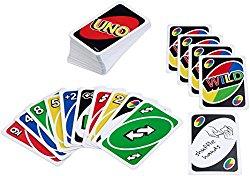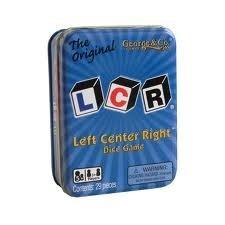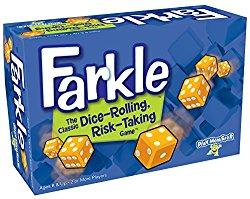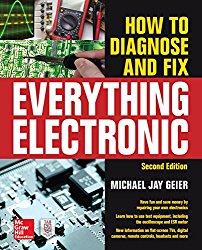This is part of a series of posts for an online class on how to use your investments to fund your retirement. To find other posts in the series, select the category “Retirement Investment Class” under “Retirement Investing” at the top. The posts will appear in reverse order, with the newest post first.
While you can buy individual stocks, bonds, and REITs, the individual investor will often buy mutual funds and their cousins, index funds and ETFs, instead. The reason is that mutual funds spread out your money over several different stocks, bonds, or other assets, so you eliminate the risk that an issue at one company will cause a devastating loss. You can still lose money if the entire market or a whole sector of the market declines, but the level of the losses will be less severe.
In a mutual fund, investors pool their money together to buy a portfolio of assets at a reasonable cost per asset. There are mutual funds that buy portfolios of stocks, bonds, REITs, and even gold and commodities. Each mutual fund has a specific investment strategy, for example, buying large company stocks, but there are some funds that buy more than one asset class — stocks and bonds, for example. In some cases a fund is free to buy basically whatever the manager wants to buy.
Mutual fund investors also pay a manager for his/her experience in investing, having the manager select the investments in exchange for a percentage of the assets held in the mutual fund. Managers therefore have an incentive to attract investors to the fund since the more money that is under management, the more they collect in fees. For the investor, it is just a matter of selecting which of the many mutual funds to buy.



When you buy into a mutual fund, you send money to the mutual fund company and receive a fixed number of shares representing a fractional ownership in the assets held by the mutual fund. The number of shares you receive is based upon the amount of money you invest and the price of the assets held by the mutual fund at some point in time, usually the closing of the markets for that day. As more people invest in a mutual fund more shares are created, so the fraction of the mutual fund that each investor owns decreases. But since the amount of money managed by the mutual fund increases, the value of your shares should not increase or decline just because more people invest. The value will increase or decrease as the value of the assets in the portfolio increases or decreases.
You make money from a mutual fund investment when the assets they own go up in price and from dividend and interest payments the assets in the portfolio pay to the mutual fund. You will typically see both capital gains and interest/dividend income each year from a mutual fund. Capital gains are normally paid out at the end of the year, where interest and dividends are paid out more frequently. Many people reinvest the payments, so they get more shares each year rather than getting a check. Taxes would still be due on the payments, however, even if the money is reinvested if they mutual funds are held in a taxable account. You can delay taxes if you invest in a tax-deferred account like an IRA or a 401k.
Hey – if you like The Small Investor, help keep it going. Buy a copy of SmallIvy Book of Investing: Book1: Investing to Grow Wealthy, buy one of the products shown, or just click on one of the product links and then browse and buy something else you need from Amazon’s huge collection. The Small Investor will make a small commission each time you buy a product through one of our links.
So what are index funds?
One issue with mutual funds is that it costs money to pay the managers. Managers also cause expenses when they trade shares, and can cause capital gains, and thereby cause taxes, when they trade shares within the fund. People started to notice that most mutual funds did not provide returns that were as good as indexes, which are defined baskets of stocks or other assets designed to show the overall health of a segment of the market. For example, a very common index, the Dow Jones Industrial Average, is a group of 30 industrial stocks that represent the performance of large industrial stocks. Investors use indexes to judge how well the markets are doing and determine if they are doing well in their investing relative to the overall market. Speculators use indices to try to time when they invest or sell assets.


A new type of mutual fund, called an index fund, was created. Rather than having a manager make the investment choices, an index fund simply buys the stocks that make up the index and tries to replicate the performance of the index. For example, an S&P 500 index fund would try to replicate the performance of the S&P 500 index, which is made up of 500 large US companies and is meant to show the performance of large US stocks. While you still need to pay some fees and costs, because you no longer need to pay a management team, pay for researchers, and because index funds only trade shares when the index in which they invests changes its make-up, fees are a lot less. For example, a managed fund might charge 1-2% of assets each year, where an index fund might charge 0.25% or even 0.05%.
While you might think that having a team of star managers would result in higher returns, more than making up for the extra fees charged, index funds actually provide returns that are better than 80 to 90% of the managed funds out there. Over long periods of time, very few managed funds beat out index funds. The reason is that because they have so much money to invest, even if a fund manager is a good stock picker, he needs to buy his first choice, second choice, and maybe even his 10th or 12th choice. Because there are then so many stocks in the mutual fund, the return starts to match the market returns. If the portfolio in a managed fund and an index fund is about the same, the one with the lower fees – the index fund – will provide better returns.
The plot thickens further
While mutual funds are better than individual assets for small investors, and while index funds are better than managed funds, there are still issues with index funds. When an investor buys into a fund, the manager must invest the money, which can cause them to buy when prices are high. Conversely, if an investor decides to sell, the manager must sell shares to return the money. This causes costs to rise when people are jumping in and out of mutual funds, trying to time the markets. In addition, when prices are declining rapidly during a market decline, people leaving mutual funds force the managers to sell right at the time when they should be buying, causing prices of assets in the fund to drop further. This can cause even more people to leave the mutual fund at just the wrong time.
To solve this issue, close-ended mutual funds and ETFs were created. In both of these types of funds, an initial amount of money is invested and a portfolio is created. Shares are then created each representing a portion of that portfolio. Rather than send money to the mutual fund manager, investors buy shares from other investors who already own the fund and want to sell. Because shares are traded with the investments in the portfolio fixed, rather than new money entering the portfolio, share redemptions or purchases do not affect the portfolio performance. This lowers costs for the fund and eliminates the issue of investors selling and driving the portfolio value down.



If you invest in an ETF or a closed-ended mutual fund, you’ll buy them through a broker rather than sending money into a fund company directly. You’ll pay a commission each time you buy or sell shares, but the amount you’ll pay for holding the fund shares will be low when compared to traditional funds. A closed-ended mutual fund can still be a managed fund, so you might still be paying a manager. An ETF, or Exchange Traded Fund, is typically an index fund. If you buy into ETFs and trade them very infrequently, your costs will be very low.
If you do move money around from time-to-time or want to buy in small increments, a traditional index fund may be better than an ETF. They may also be better if you want to be able to sell small amounts of the fund regularly, to take monthly withdrawals in retirement, for example. If you are willing to put in a few thousand dollars at a time and hold long-term, ETFs will usually be better.

Want all the details on using Investing to grow financially Independent? Try The SmallIvy Book of Investing.
Have a burning investing question you’d like answered? Please send to [email protected] or leave in a comment.
Follow on Twitter to get news about new articles. @SmallIvy_SI
Disclaimer: This blog is not meant to give financial planning or tax advice. It gives general information on investment strategy, picking stocks, and generally managing money to build wealth. It is not a solicitation to buy or sell stocks or any security. Financial planning advice should be sought from a certified financial planner, which the author is not. Tax advice should be sought from a CPA. All investments involve risk and the reader as urged to consider risks carefully and seek the advice of experts if needed before investing.
